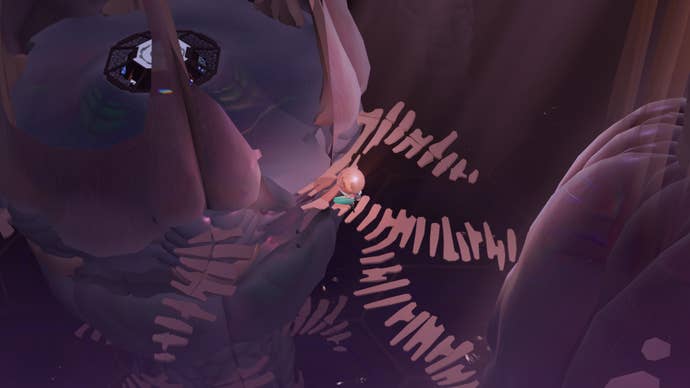Xbox Game Pass’ latest GOTY contender comes from the genius mind behind Inside and Limbo
Cocoon sets you out on a journey you'll find impossible to finish, with a recursive sell that worms into your brain – and nests there.
If you've so much as put minutes into either Limbo or Inside, you'll know that each of those games do something special to you. The disarmingly simple gameplay is a foil for some of the most unsettling and intrusive indie gaming you'll see this side of Disco Elysium. And now, Limbo and Inside's lead gameplay designer Jeppe Carlsen has got another game that's just as good at getting under your skin.
Despite having not played it since its release in 2016, I haven't really been able to stop thinking about Inside. I bought it on a bit of a whim, and started it late at night, probably the best way you can experience the kind of game that it is. Of course, I told myself "I'll just play for an hour and go to bed." Reader, that did not happen. In fact, I finished it the same night because I just couldn't put it down. There was something so compelling about its mysterious, dystopian setting that the idea of stopping felt impossible; ironically, that almost seemed to parallel the very story it ended up telling. And here I am again with Cocoon, struggling to pull myself away from the controller because I just need to keep going.
If you haven't heard of it, Cocoon is the debut title from Geometric Interactive, a studio formed by former Playdead developer and lead gameplay designer of Limbo and Inside Jeppe Carlsen. I think on the face of it, Cocoon might be a little difficult to explain. You play as this alien, bug-like creature, and you can't really do anything other than walk around. Eventually, you find this futuristic looking pad that, once you interact with it, transports you outside of the world you were exploring, showing you that the entirety of it is contained in a simple glass orb.
That's the main concept of the game, travelling to and from different worlds, shrinking and enlarging yourself in and out of them, carrying them around from place to place. As you progress, you essentially collect more and more of these orb worlds, some of which you'll have to visit more than once, and even take one world inside the other. If you think too hard about it, you might start to feel some kind of existential dread, so maybe it's better to just think "wow video games are cool!"
There's no combat to be found, just some satisfyingly clever puzzles that should thrill Portal lovers, at least in terms of the way you have to constantly rethink the spaces you inhabit. You will find the occasional boss battle, but they're more like puzzles anyway, as you never acquire any kind of weapon. Beating bosses complicates things further, as it turns the orbs that contain each world into abilities of sorts, all of which are unique.

Everything comes together so tightly, and of course much like Limbo and Inside before it, you start the game without any indication of what it is you're doing, or even why you're doing it. That's the draw of it all though: what's with this strange world, or worlds I should say? How far out can I go? Is there an end to the various worlds you travel between, or does it just go in a loop? I don't have any of the answers to these questions yet, because being seven years older than I was when I played Inside, I now understand that a good night's sleep is important every night, not just when I feel like it.
You can probably tell just from the fact I'm writing this at all means that I'm still thinking about it. Lucky, then, that I have some time this evening to try and get some answers. But if Inside's ending is anything to go off of, I expect I'll find more questions than anything else.

.jpg?width=70&height=70&fit=crop&quality=60&format=png&auto=webp)
